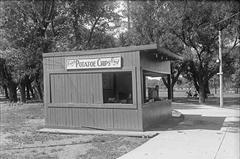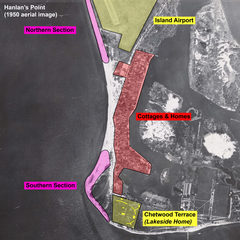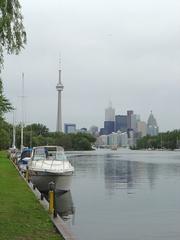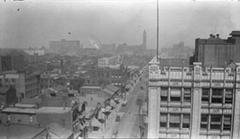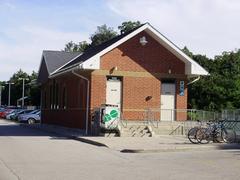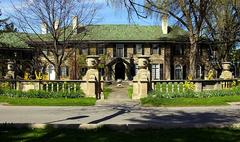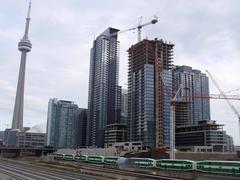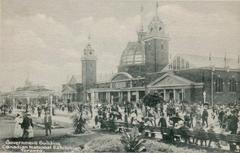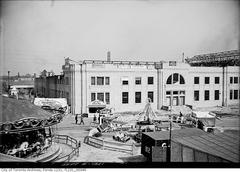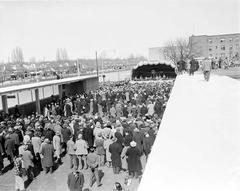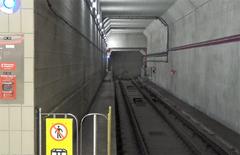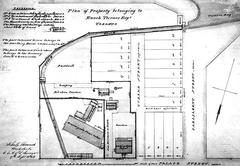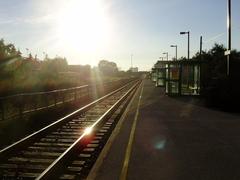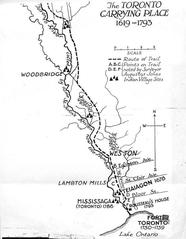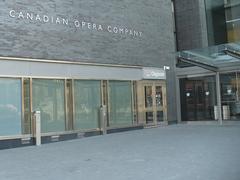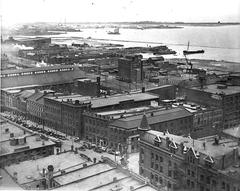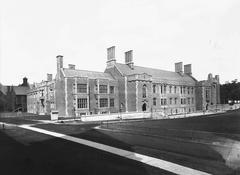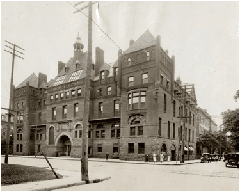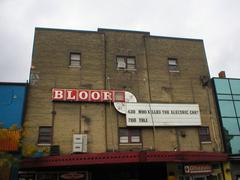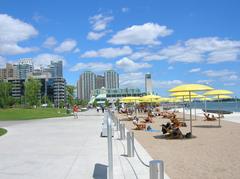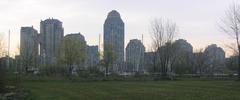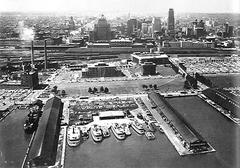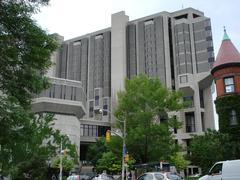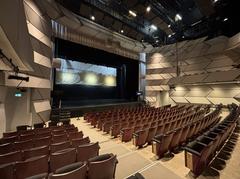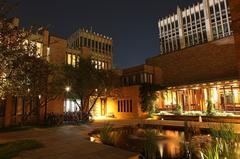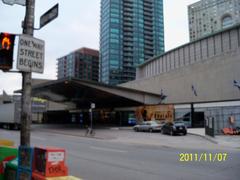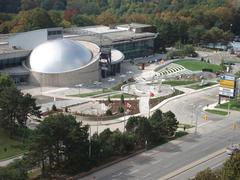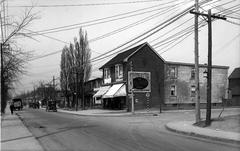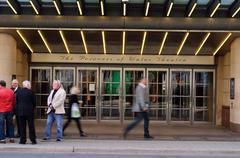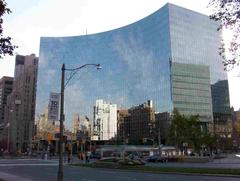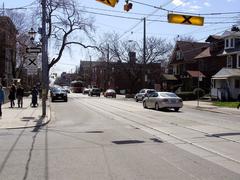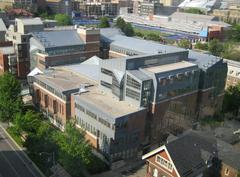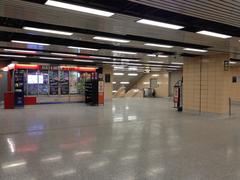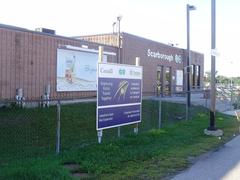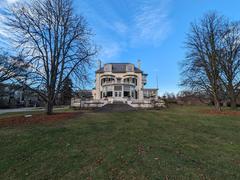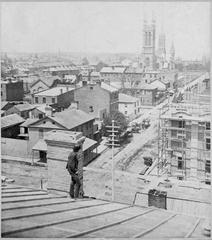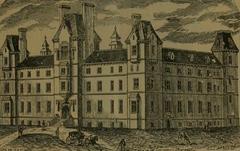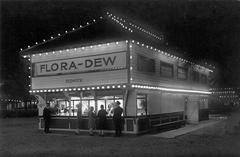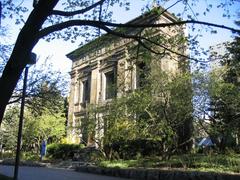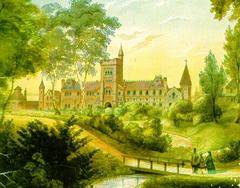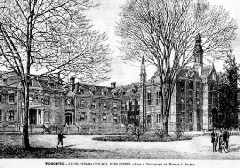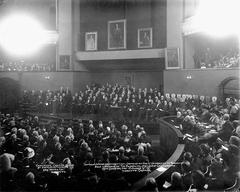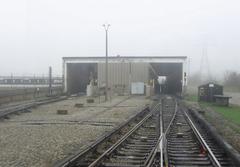
Comprehensive Guide to Visiting Foredune Trail, Toronto, Canada
Date: 23/07/2024
Introduction
Welcome to the Foredune Trail, a hidden gem nestled in Toronto, Canada. This guide is designed to provide a comprehensive overview of the trail, from its rich historical context to practical visitor information. The Foredune Trail is not just a scenic escape but also a tapestry of Toronto’s indigenous heritage, European settlement history, and efforts in environmental restoration. Whether you’re a history enthusiast, a nature lover, or simply looking for a recreational retreat, the Foredune Trail offers a multifaceted experience (City of Toronto). Located in the Toronto Islands, the trail provides stunning views of Lake Ontario and is a haven for bird watchers, photographers, and hikers alike. With its year-round accessibility and array of activities, the Foredune Trail promises an enriching visit for everyone (Toronto and Region Conservation Authority).
Table of Contents
- Introduction
- History and Significance
- Visitor Information
- Nearby Attractions and Accessibility
- Biodiversity and Wildlife
- Recreational Importance
- Educational and Research Opportunities
- Community Engagement
- Future Prospects
- FAQ Section
- Conclusion
- Sources
History and Significance
Indigenous Heritage
The Foredune Trail, located in Toronto, Canada, is steeped in rich indigenous history. The area was originally inhabited by the First Nations peoples, including the Mississaugas of the Credit River. These indigenous communities utilized the land for hunting, fishing, and gathering, and their presence is still felt today through various cultural landmarks and preserved sites. The trail itself runs through areas that were once significant for these communities, providing a living connection to the past. For more information on the indigenous history of the area, visit the Mississaugas of the Credit First Nation.
European Settlement
The arrival of European settlers in the 17th century marked a significant shift in the history of the Foredune Trail area. French explorers were among the first Europeans to navigate the region, followed by British settlers who established permanent settlements. The land around the trail was gradually transformed from indigenous hunting grounds to agricultural fields and later urban developments. This period saw the construction of early infrastructure that laid the groundwork for modern Toronto. For a detailed account of Toronto’s early European history, refer to the City of Toronto Archives.
Industrialization and Urban Development
The 19th and early 20th centuries were periods of rapid industrialization and urbanization for Toronto, and the Foredune Trail area was no exception. The trail, which was once a natural landscape, saw significant changes as factories, railways, and residential areas were developed. This industrial boom brought economic growth but also environmental challenges, leading to efforts in the late 20th century to preserve and restore natural areas. The transformation of the trail from an industrial zone to a recreational area is a testament to the city’s commitment to environmental sustainability. More details on Toronto’s industrial history can be found at the Toronto Railway Historical Association.
Environmental Restoration
In the latter half of the 20th century, the Foredune Trail underwent significant environmental restoration efforts. These initiatives aimed to rehabilitate the natural landscape, which had been degraded by industrial activities. The restoration projects included reforestation, wetland creation, and the introduction of native plant species. These efforts have not only enhanced the ecological value of the trail but also made it a popular destination for nature enthusiasts and hikers. For more information on environmental restoration projects in Toronto, visit the Toronto and Region Conservation Authority.
Cultural Significance
The Foredune Trail holds considerable cultural significance for the local community. It serves as a green space where residents can engage in outdoor activities, connect with nature, and learn about the area’s history. The trail is also a venue for various cultural events and educational programs that highlight the importance of environmental conservation and indigenous heritage. These activities foster a sense of community and promote cultural awareness. For upcoming events and programs, check the City of Toronto’s Parks and Recreation.
Visitor Information
Ticket Prices
The Foredune Trail is free to visit, making it an accessible destination for everyone. There are no tickets required to explore this beautiful trail.
Opening Hours
The trail is open year-round from sunrise to sunset. Seasonal changes may affect opening hours, so it’s a good idea to check the City of Toronto’s Parks and Recreation website for the latest information.
Travel Tips
- Best Time to Visit: Spring and fall are ideal for visiting due to mild weather and vibrant foliage.
- What to Bring: Comfortable walking shoes, water, and a camera for capturing the stunning scenery.
- How to Get There: The trail is accessible by public transit and offers parking for those driving.
Nearby Attractions and Accessibility
Nearby Attractions
While visiting the Foredune Trail, you might also want to explore nearby attractions such as the Toronto Zoo, Rouge National Urban Park, and the Toronto Botanical Garden. These sites offer additional opportunities to enjoy nature and learn about the region’s biodiversity.
Accessibility
The Foredune Trail is designed to be accessible for all visitors, including those with mobility challenges. Paved pathways and clear signage ensure that everyone can enjoy the trail’s natural beauty.
Biodiversity and Wildlife
The Foredune Trail is home to a diverse range of flora and fauna, making it an important ecological corridor in Toronto. The trail’s habitats support various species of birds, mammals, and insects, some of which are rare or endangered. The presence of these species underscores the trail’s ecological importance and the success of conservation efforts. Birdwatchers and wildlife enthusiasts often visit the trail to observe species such as the red-tailed hawk, eastern cottontail, and monarch butterfly. For a comprehensive guide to the wildlife found along the trail, visit the Toronto Wildlife Centre.
Recreational Importance
The Foredune Trail is a vital recreational resource for Toronto’s residents and visitors. It offers a range of activities, including hiking, cycling, birdwatching, and picnicking. The trail’s well-maintained paths and scenic views make it a popular destination for outdoor enthusiasts. Additionally, the trail connects to other green spaces and parks in the city, providing an extensive network of recreational opportunities. For trail maps and visitor information, refer to the Toronto Parks, Forestry & Recreation.
Educational and Research Opportunities
The Foredune Trail is also a valuable site for educational and research activities. Local schools and universities often use the trail for field trips and research projects focused on ecology, environmental science, and history. These educational programs help students gain hands-on experience and a deeper understanding of the natural world. Researchers also study the trail’s ecosystems to monitor biodiversity and assess the impact of conservation efforts. For information on educational programs and research opportunities, visit the University of Toronto’s Faculty of Forestry.
Community Engagement
Community engagement is a cornerstone of the Foredune Trail’s significance. Local organizations and volunteer groups play an active role in maintaining the trail and organizing events. These community-driven efforts ensure the trail remains a vibrant and accessible space for everyone. Volunteer opportunities and community events are regularly posted on the Toronto Environmental Alliance.
Future Prospects
Looking ahead, the Foredune Trail is poised to continue its legacy as a cherished natural and cultural asset in Toronto. Ongoing and future projects aim to enhance the trail’s accessibility, expand its ecological restoration efforts, and increase community involvement. These initiatives will ensure that the trail remains a vital part of Toronto’s landscape for generations to come. For updates on future projects, visit the City of Toronto’s Environmental Initiatives.
FAQ Section
What are the Foredune Trail visiting hours?
The trail is open from sunrise to sunset year-round. Check the City of Toronto’s website for seasonal variations.
Do I need tickets to visit the Foredune Trail?
No, the Foredune Trail is free to visit.
What are some nearby attractions?
Nearby attractions include the Toronto Zoo, Rouge National Urban Park, and the Toronto Botanical Garden.
Is the Foredune Trail accessible?
Yes, the trail is designed to be accessible for all visitors, including those with mobility challenges.
Conclusion
The Foredune Trail offers a unique blend of history, culture, and natural beauty. Whether you’re interested in exploring Toronto’s indigenous heritage, enjoying recreational activities, or engaging in community events, this trail has something for everyone. Don’t miss out on this incredible destination—plan your visit today! For more information, download the Audiala mobile app, check out other related posts, or follow us on social media for updates.





